Posts Tagged: Norm Gary
Kim Flottum: Friend of Beekeepers and Bees
We are saddened to hear of the death of Peter "Kim" Flottum, longtime editor of Bee Culture magazine, a friend of the nation's beekeepers and bee scientists, and a close friend of the UC Davis bee community. A resident of Medina, Ohio, Kim died...
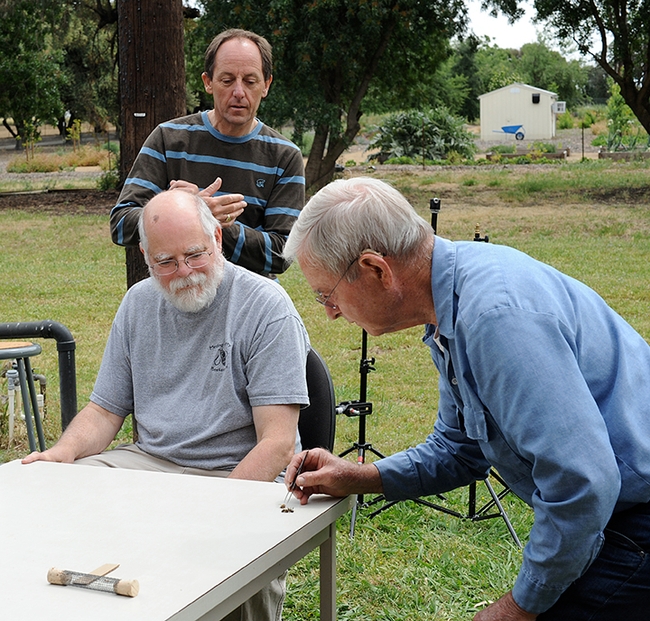
UC Davis emeritus professor Norm Gary (far right) working with Kim Flottum (seated) on a television project in 2010 at UC Davis. In back is a member of the TV crew. (Photo by Kathy Keatley Garvey)
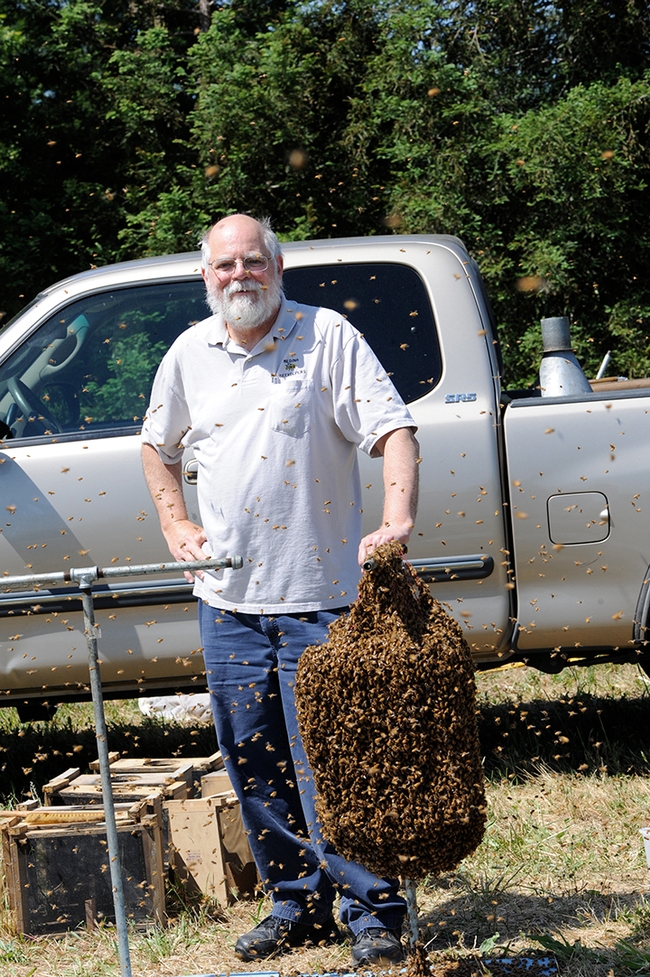
In 2010, Kim Flottum, then editor of Bee Culture, stands by a cluster of bees, ready for bee wrangling by his friend Norm Gary, UC Davis emeritus professor of entomology. (Photo by Kathy Keatley Garvey)
No Labor Day Holiday for Honey Bees
On Labor Day, a federal holiday, we celebrate the our country's labor movement, our gratitude, and our achievements. But there is no Labor Day holiday for the worker bee, one of three castes (queen, worker and drone) in a honey bee colony. No...
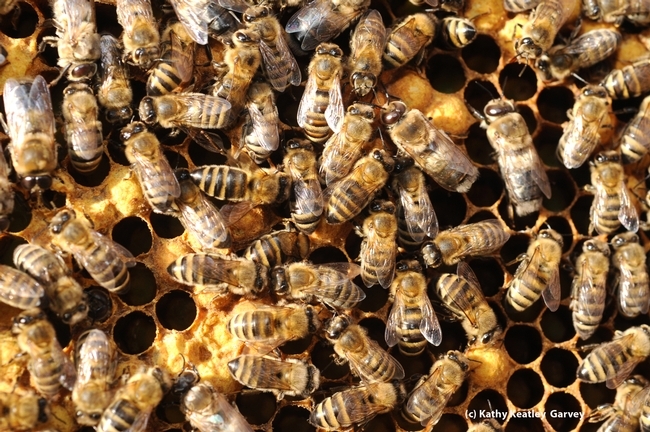
Worker bees are aptly named. They comprise most of the bees in the colony and do most of the work. (Photo by Kathy Keatley Garvey)
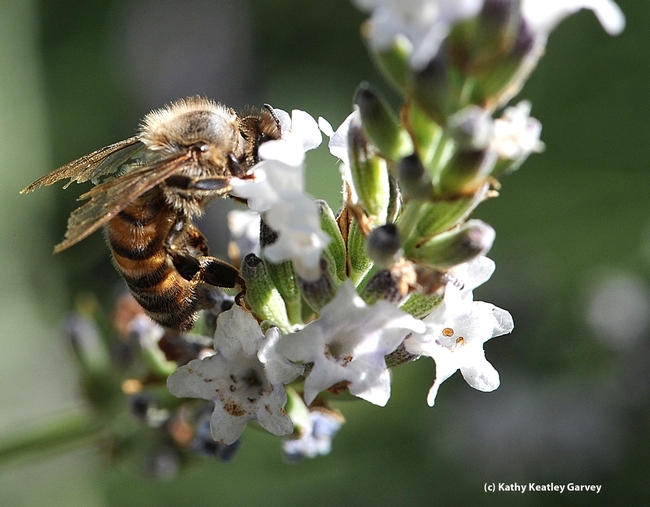
This aging worker bee is all tattered and torn. (Photo by Kathy Keatley Garvey)
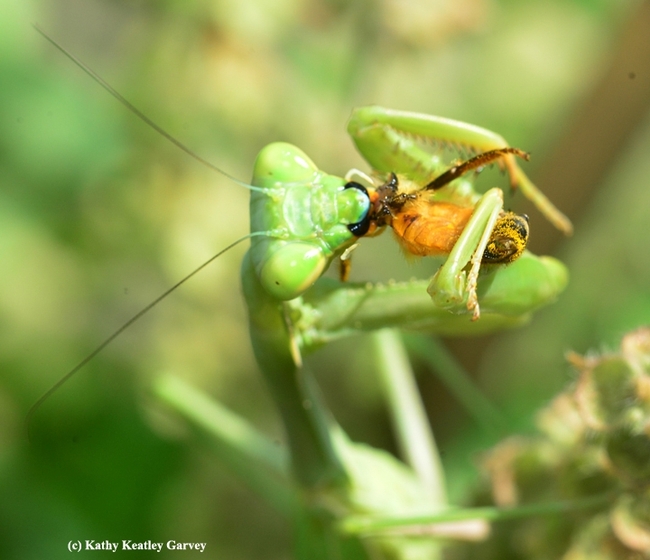
Foraging can be dangerous. Here a praying mantis has just nabbed a worker bee. (Photo by Kathy Keatley Garvey)
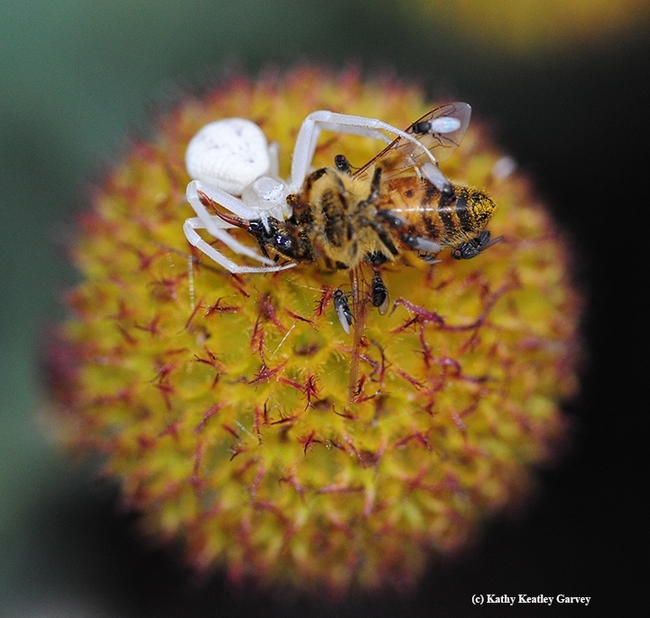
A crab spider feeding on a honey bee. Crab spiders are ambush predators. (Photo by Kathy Keatley Garvey)
National Moth Week: Here's One Moth that Beekeepers Won't Celebrate
During the 11th annual National Moth Week, one thing's for sure: Beekeepers won't be celebrating the beauty, life cycle, or habitat of the Greater Wax Moth (Galleria mellonella), also known as "the honeycomb moth." It's a major pest of bee...
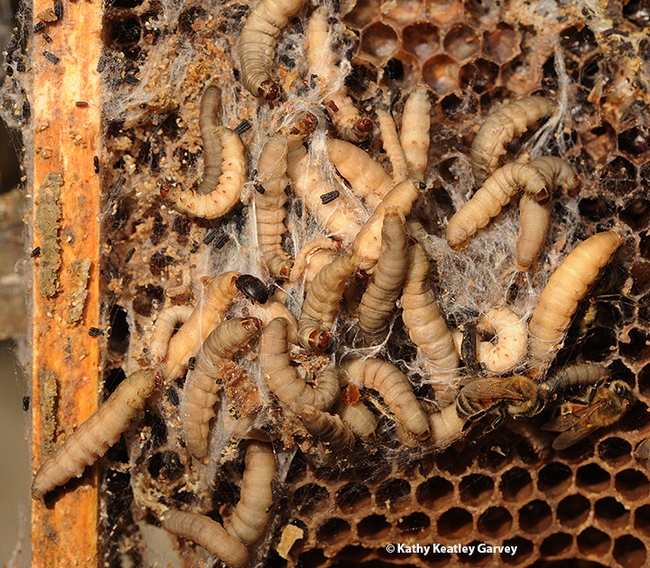
The larvae of the Greater Wax Moth (Galleria mellonella) inside a bee hive. The black dotes are small hive beetles. (Photo by Kathy Keatley Garvey)
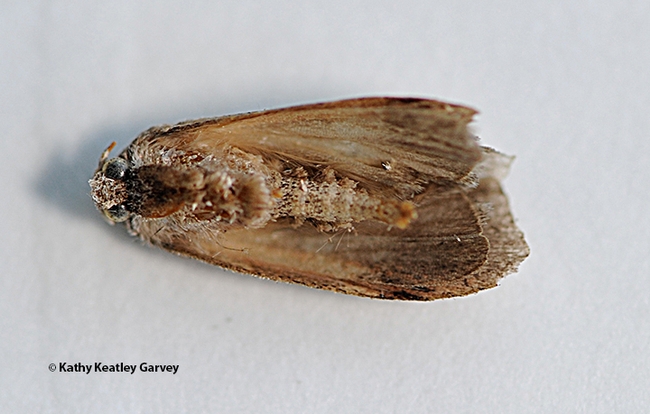
This is a Greater Wax Moth (Galleria mellonella), a night-flying moth that lays its eggs inside the cracks and crevices of a hive, inside and out. (Photo by Kathy Keatley Garvey)
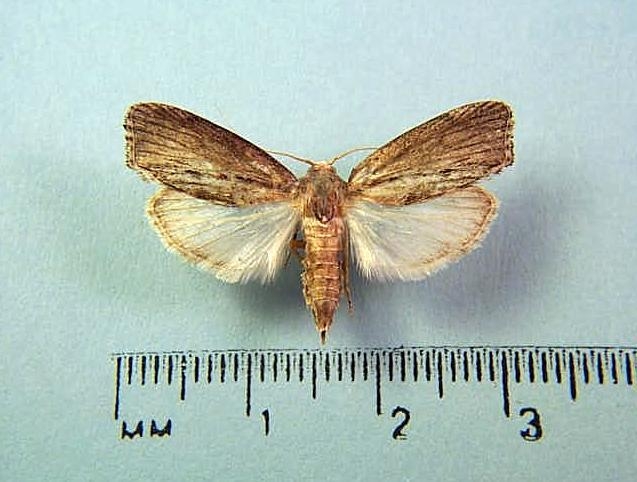
This is a Bohart Museum of Entomology specimen, the Greater Wax Moth. (Photo by Jeff Smith)
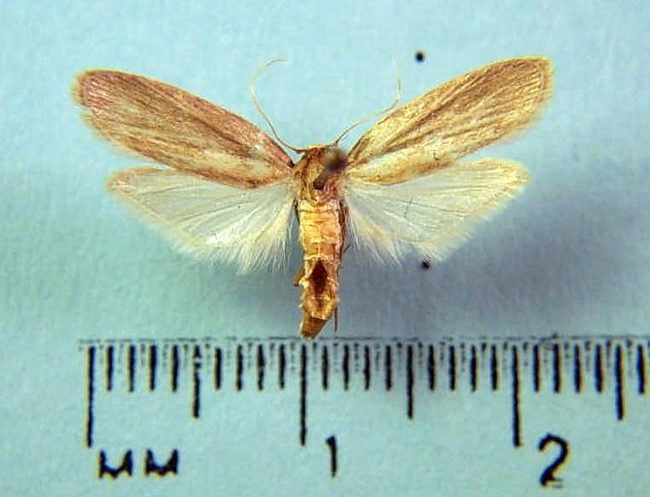
This is a Lesser Wax Moth, Achroia grisella, from the Bohart Museum of Entomology collection. (Photo by Jeff Smith)
Ever Seen a Honey Bee Foraging on a Daffodil?
Ever seen a honey bee foraging on a daffodil? In the early spring, blooms are few and far between. Daffodils are not usually considered "bee plants." But if nothing else is blooming, bees will head over to the daffodils. On a Feb. 6th visit to...
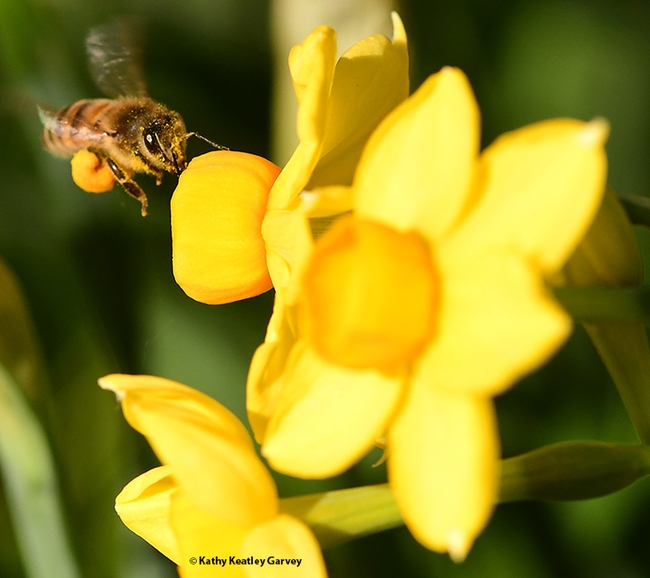
A pollen-packing honey bee heads a patch of daffodils on the UC Davis campus. (Photo by Kathy Keatley Garvey)
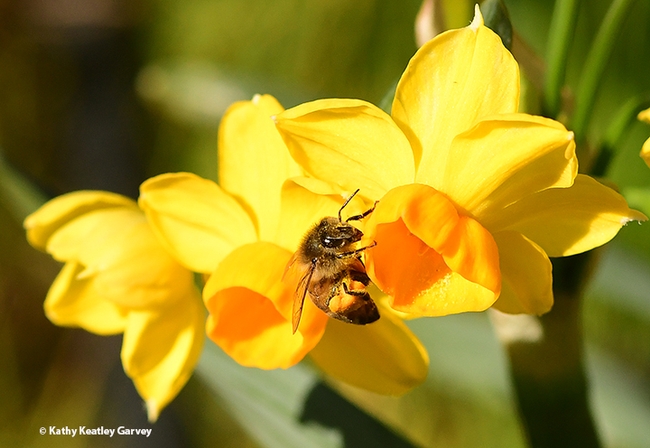
A honey bee adjusts her load of pollen. (Photo by Kathy Keatley Garvey)
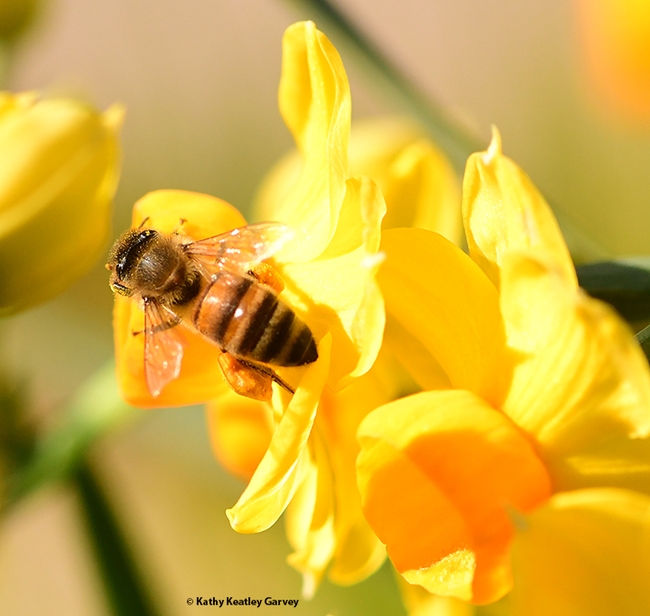
A golden honey bee with a load of golden pollen from golden daffodils. (Photo by Kathy Keatley Garvey)
Honey Bees and the Hot Spell
Earlier this week the National Weather Service warned us about an excessive heat spell--"dangerous and record-breaking heat conditions" here in California's Central Valley and the foothills that may reach 100 to 113 degrees today (Wednesday) through...
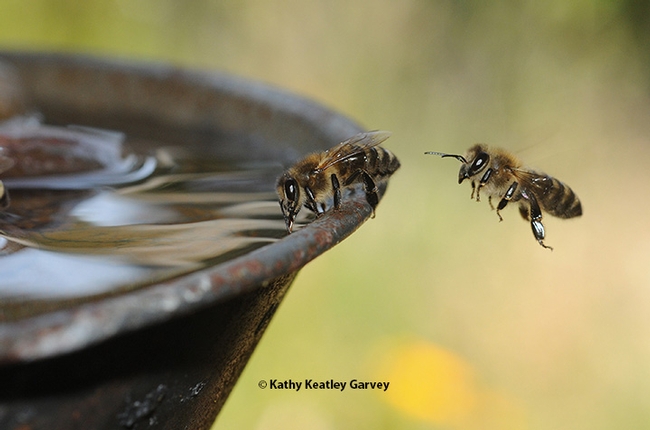
Honey bees at a water fountain at the Harry H. Laidlaw Jr. Honey Bee Research Facility, UC Davis. (Photo by Kathy Keatley Garvey)

